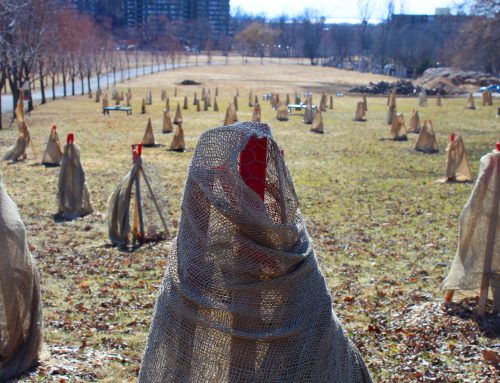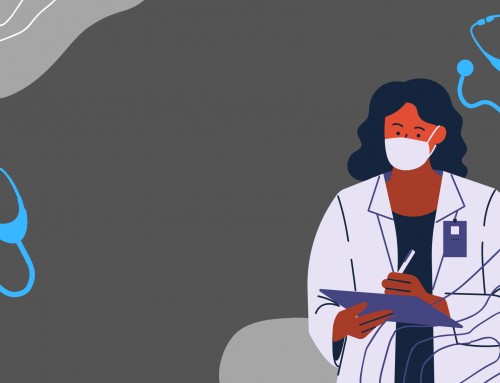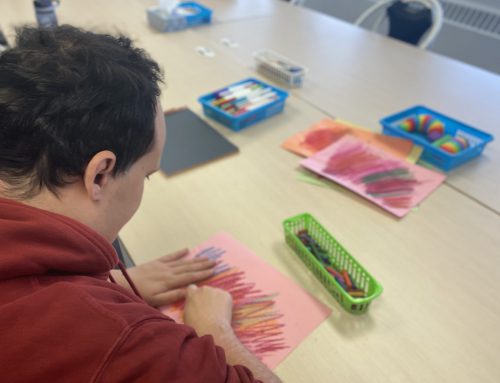BY Florence Ojo & Brianna Losinger-Ross
Victor Alawani, 28, injured himself during a basketball game, sustaining an outward sprain on his right ankle.
“My ankle was hurting after the game,” said Alawani. “The ball was in the air, I jumped up to pick the ball up and landed on the person’s foot, so my ankle sprained outwardly.”
“At that moment the first thing you do is tighten the shoelaces,” Alawani explains. “You make it extremely tight, so it keeps the pressure on the ankle from moving.”
Even with the sharp pain he felt during the middle of a play, it didn’t stop him from finishing the game, which he blames on the adrenaline.
Alawani admits that it was only once the game was over and the body was calm, the pain set in. He tries not to use any pain medication.
Pain management is becoming an increasing concern in healthcare management. However, physicians are more likely to rely on pills for quick solutions to managing the pains of their patients. Traditional methods that could better manage pain or address the root cause of the pain are often ignored.
Alawani preferred to opt for alternative treatments by adding some motion and physiotherapy to his daily routine, and he avoided applying pressure on his ankle so he would heal better.
“There was an elastic I had on my right ankle,” explains Alwani. “An ankle wrap supports and prevents sprain. It had kept my ankle firm to avoid aggravating the injury.”
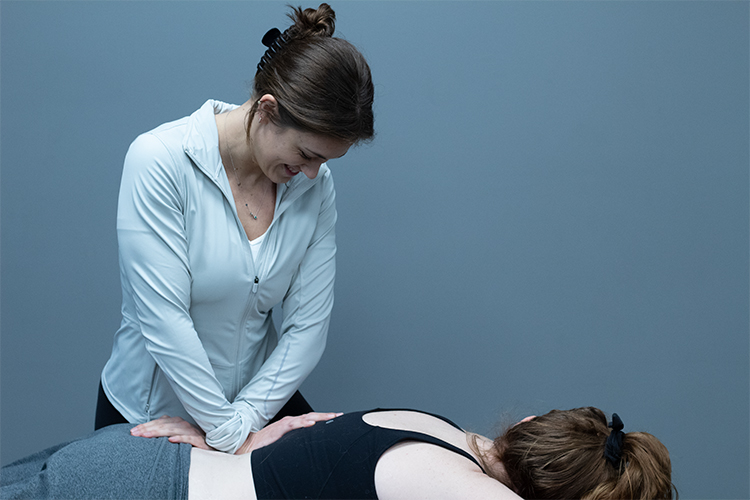
Emily Gaudet gently massages her client’s back while assessing the intensity of pain. Photo by Florence Ojo.
One in five people is affected by arthritis, a condition that affects the body’s joints and causes pain, stiffness, and swelling.
“It started with a sensational pain below my knee,” explains Maurice Eteka.
Maurice Eteka, a 37-year-old man, is currently self-employed and has lived with osteoarthritis, the most common form of arthritis, since 2001.
“I realized that each time I bent down, the pain level increased,” he says. “As time went on the pain became very severe, and I was unable to kneel or bend in a certain position. Even up until this very moment as we speak.”
At first, his doctor told him to take Tylenol and to avoid putting too much pressure on the knee area, but Eteka did not see much improvement, so he had to take matters into his own hands.
He now avoids doing strenuous activities like weightlifting in the gym and doing squats. He also limits the time he spends bending down or climbing stairs. These techniques do not eliminate the pain but make it more manageable.
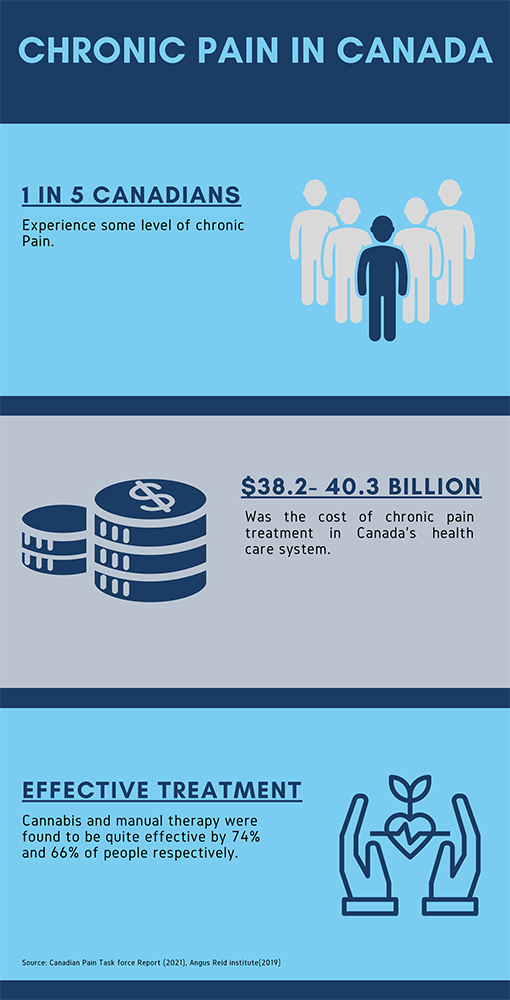
An insight on people living with chronic pain with the cost and effective treatment. Infographic by Florence Ojo.
Emily Gaudet is a certified professional athletic therapist, who works in both a clinical and on-field setting. She sees many types of injuries that require varying amounts of time and treatments to help relieve pain. However, each session depends on the severity of the fracture of each patient, which requires a follow-up once or twice a week.
“I like to include a lot of manual techniques in my treatments,” she says. “I realized early that it is important to perform releases, which some people benefit from immediately. Even though it does not immediately fix the pain, they are in a better position to start the treatment plan.”
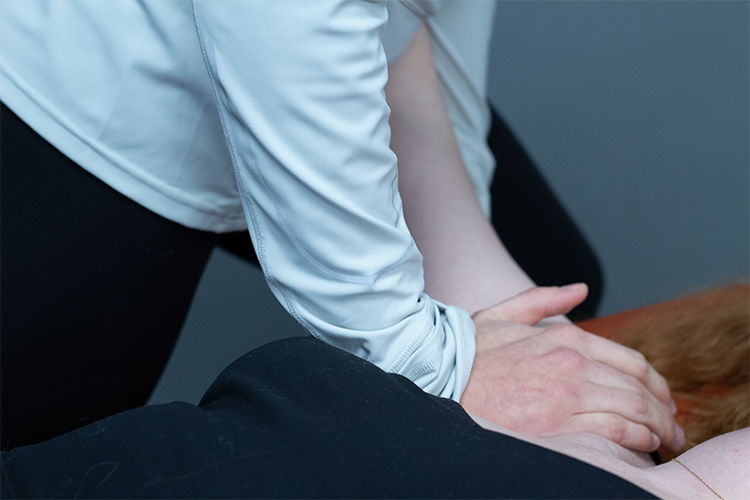
Gaudet intensifies the session with a gentle massage press around her client’s arm area. Photo by Florence Ojo.
Certain lifestyle factors can contribute to pain in the body. A lack of physical activity can lead to muscle weakness and imbalances, which can put a strain on the body and lead to pain. As a result, poor posture, lack of exercise, unhealthy eating habits, smoking, and stress are all lifestyle factors that can lead to pain.
Adebowale Adejare, 38, tore a ligament on his right knee in 2019 while helping his friend move. Now he suffers from chronic pain. It was a kind gesture that changed the course of Adejare’s life, who has had to learn to live with persistent pain in his leg.
At first, I thought it was a regular pain,” he explains. “Later, I started feeling more discomfort while walking or performing any exercise involving movement of the leg so at that point, I decided to visit a doctor.”
Like many other people who suffer from chronic pain, Adejare has not been using much medication to ease the pain, sticking largely to over-the-counter oral medications like Advil and Tylenol as well as balms. In brief, Adejare feels medication is not suitable for the body. He prefers therapy.
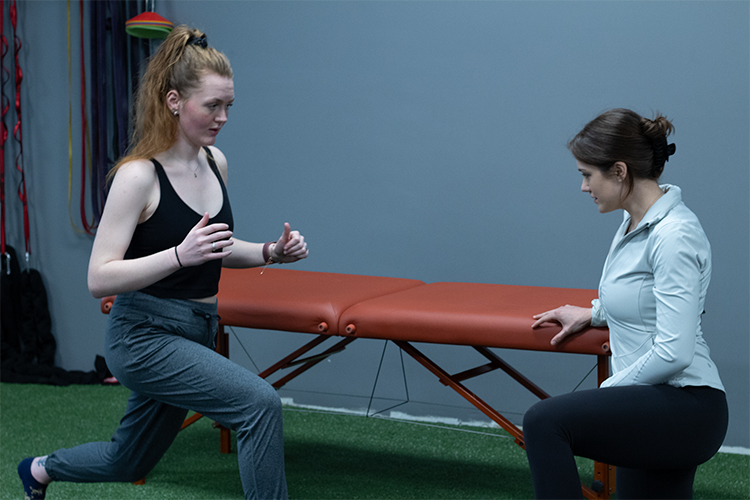
Gaudet assesses a patient while she stretches her knees. Photo by Florence Ojo.
After dealing with the pain for three months, Adejare’s doctor recommended he see an orthopedist.
“The doctor’s advice was to go see an orthopedic doctor,” Adejare explains. “To help me see how I can relieve myself of the pain.”
To see a specialist in Ontario takes about one to two years. Adejare is still waiting to see what they have to say about his pain.
In reports by the Canadian Institute for Health Information (CIHI), the median wait time to see a specialist physician in Canada increased from 8.7 weeks in 2019 to 10.8 weeks in 2020, which represents an increase of about 24 per cent. Due to long wait times, Adejare’s doctor recommended he try physiotherapy, whose cost is covered by his work insurance.
“As of now, I am yet to see any improvement, as I just started the first session,” Adebowale explains. “ I know it will be a gradual process to see any changes, if I don’t see any, I will probably be opting for surgery, but hopefully not.”
Adejare hopes he won’t have to get surgery.
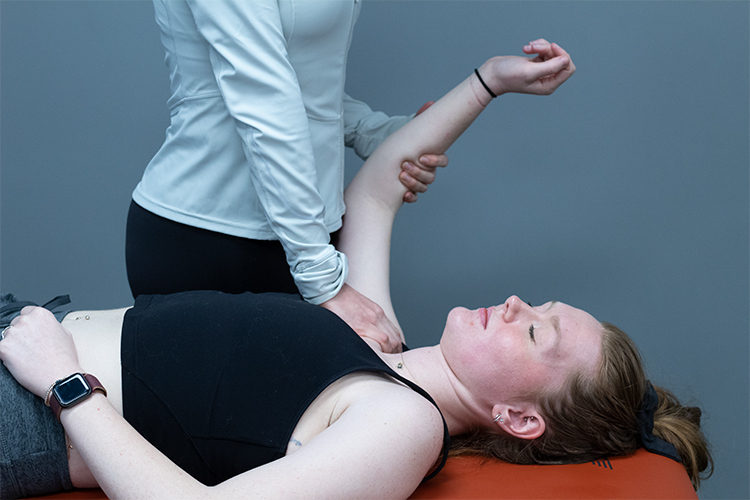
Gaudet performing manipulation therapy on her patient. Photo by Florence Ojo.
Many people are suffering from different types of long-suffering pain, and with backlogs to see medical specialists, some are turning towards alternative therapies and treatments. These treatments or therapies are focused a lot more on the individual than other forms of medicine, since they are all centered around the wants and needs of the patients.
According to Dr. Roland Dada, a General Practitioner, there are therapies that can be added alongside medication, but medications cannot be eradicated in managing pain.
“In the medical field, we score pain from zero to ten,” explains Dada. “A pain that is above seven, a patient cannot do away with medications, because they won’t work. We can reduce the dosage on the number of medications being used, but I won’t say we can curb medications for pain.”
Dada agrees that new medications are being developed to manage pain. However, these medications are simply an evolution from ones currently available.
“So, we have what we call pain ladder and there are ways medications can be used for this ladder,” he says. “For example, pain medications available such as ibuprofen, opioids, and morphine are now being modified to relieve pain over a long period. These are the innovations that are coming up in pain management.”
Dada balances his patients’ desire for alternative forms of pain management with his knowledge of effective medication.
“People using other forms of therapy such as yoga, acupuncture, or physio, have testified to be very effective,” he affirms. “This form of therapy is said to be relaxing, people engaging themselves in this type of activity can relieve pain. For this, they are not concentrating on the pain. However, when the exercise is done, the pain can only be controlled over some time. This equates to medications as well, which is not effective for a long period.”
Quebec’s older population is keeping active to manage chronic pain. Video by Brianna Losinger-Ross.

